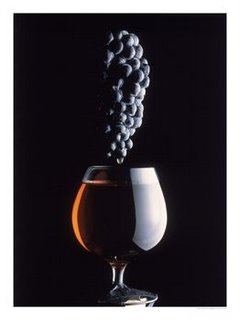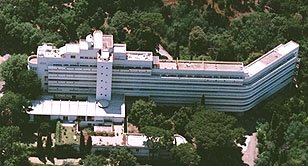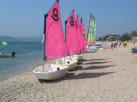Cavalaire - History - Histoire
 The name Cavalaire comes from the Greek colony "Heraclea Cacabaria" which founded a settlement in the bay. It evokes memories of Carthage and Hercules. The story of this young town (which has just celebrated its 70th birthday) of 5300 inhabitants began in 800 B.C. when the Ligurians occupied the fortress of Montjean. The Count of Provence, Guillaume I, built a watchtower on Cap Cavalaire, which was subsequently fortified by the Counts of Grimaud. the fortifications were destroyed in 1646.
The name Cavalaire comes from the Greek colony "Heraclea Cacabaria" which founded a settlement in the bay. It evokes memories of Carthage and Hercules. The story of this young town (which has just celebrated its 70th birthday) of 5300 inhabitants began in 800 B.C. when the Ligurians occupied the fortress of Montjean. The Count of Provence, Guillaume I, built a watchtower on Cap Cavalaire, which was subsequently fortified by the Counts of Grimaud. the fortifications were destroyed in 1646.In the 18th century, Cavalaire was a small fishing village, attached to the neighbouring village of Gassin until 1929. On August 15, 1944, the Allied Forces chose the site for the landings of the American army's 3rd infantry division. Cavalaire's main activity is now tourism and the town possesses a 1200 berth marina, famous throughout the Mediterranean. The remains of the Ligurian fortress, inhabited from 6 to 4 B.C., can still be admired on the heights overlooking Cavalaire Bay.
 Le nom de Cavalaire provient d'une colonie grecque "Heraclea Cacabaria" qui avait pris position dans le baie. Il évoque le souvenir de Carthage et rapelle le culte d'Hercule. L'histoire de cette jeune commune (elle vient de fêter ses 70 ans) de 5300 habitants commence 800 ans avant notre ère avec les Ligures, installés dans leur oppidum (forteresse) du Montjean. Le compte de Provence, Guillaume Ier, construisit sur le Cap Cavalaire une tour de vigie à laquelle les comtes de Grimaud ajoutèrent des fortifications, détruites en 1646.
Le nom de Cavalaire provient d'une colonie grecque "Heraclea Cacabaria" qui avait pris position dans le baie. Il évoque le souvenir de Carthage et rapelle le culte d'Hercule. L'histoire de cette jeune commune (elle vient de fêter ses 70 ans) de 5300 habitants commence 800 ans avant notre ère avec les Ligures, installés dans leur oppidum (forteresse) du Montjean. Le compte de Provence, Guillaume Ier, construisit sur le Cap Cavalaire une tour de vigie à laquelle les comtes de Grimaud ajoutèrent des fortifications, détruites en 1646.



 This historic hotel, designed by Georges-Henri Pingusson, is situated on an elevated site overlooking the town of
This historic hotel, designed by Georges-Henri Pingusson, is situated on an elevated site overlooking the town of 




